Getting Smarter with Small Molecule Discovery: Lessons Learned With Tom Mander
The search for new small molecule therapeutics is becoming increasingly difficult as companies focus on more challenging targets. Tom Mander, Chief Executive Officer of Domainex, looks back on his career in small molecules and shares his hopes for the future – including how small molecules may finally be able to provide a breakthrough in Parkinson’s disease.
Tom Mander | | 17 min read | Career
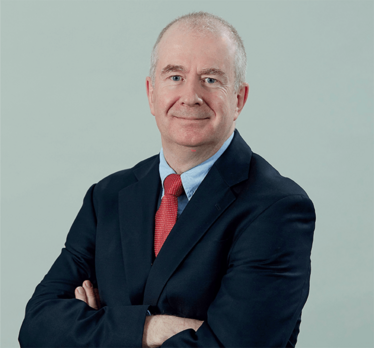
Small molecule drug discovery is amazing
I've been working in drug discovery for the last 30 years and my career has taken me to many different types of companies. I’ve worked for Amersham International (which later became GE Healthcare) where I was involved in making assay kits. I worked in a group involved in pro-inflammatory cytokines and I developed a kit for TNF alpha, which later emerged as an important therapeutic target for Humira, the multi-billion dollar selling blockbuster treatment for rheumatoid arthritis! And it really whetted my appetite for applied research.
My DPhil took me to Oxford, where I studied microglial cells in the brain and the pituitary gland. Microglial cells are the resident population of macrophages in the brain – which do fascinating things, such as eating (phagocytosis is the proper name) damaged neurons and clearing infection. Funnily enough, I’m now involved with microglial cells again; Domainex is working with Parkinson’s UK on small molecules that target a microglial cell receptor. There will be more on that project later…
After my DPhil, I went to work for a UK biotech company called Xenova Limited in Slough. My first project was looking for natural product inhibitors of TNF alpha. We got lucky, finding a 10nM compound in the reference collection. The project, by this point, had been partnered with Suntory of Japan so I got to travel to present our findings, and was seconded to the Sunley Institute in Hammersmith to learn more about the mechanism of action of the compound (we found that it acted on the MAP kinase signalling pathway).
I also had a stint working at Glaxo Wellcome running cell-based high throughput screens. When working there, I saw how drug discovery had become an exercise in “throwing” research over the fence to the next department and how there was a lack of connectivity between the discovery technologists and therapeutic area scientists. Glaxo Wellcome went along with my suggestion to create a new forum that brought the various disciplines together. They even funded my MBA. Before the age of 30, I had become a group leader, which was quite unusual. Being a young upstart in a powerful group in the Lead Discovery unit was exciting – particularly as money was no object back then so we could invest in a lot of screening automation!
I eventually left to work for Evotec in Hamburg in 1999, where I stayed for 4 years. It was a time when Evotec floated on the stock exchange in Frankfurt, acquired Oxford Asymmetry International (Abingon, UK), and began on its path to offer an integrated suite of drug discovery services. Since Evotec, I have been fortunate to work in other services companies including Tripos Discovery Research, Asterand, Charles River, and now for the last 7 years with Domainex. Hence, the vast majority of my career has been in small molecule drug discovery service organizations.
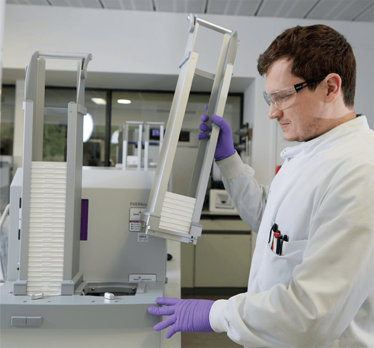
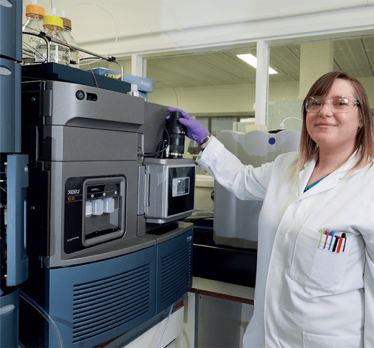
The service industry leads to variety
Today, I’m the chief executive officer of a CRO called Domainex. In the contract services industry, you have to work hard. There are no hiding places and the expectations are high – clients are usually discerning and demanding. It’s a full-on experience! The services industry is also highly competitive, which means you have to continue to innovate and adopt new technologies, and find new approaches to do drug discovery more efficiently. It’s a pressure cooker environment – but it’s also fascinating. No two projects are ever quite the same and I enjoy the huge variety and breadth of the projects that we run with our clients as they span various therapeutic settings.
Domainex was spun out of the UK’s University College London around 20 years ago based on Combinatorial Domain Hunting, which allows for the generation of tens of thousands of variants of genes of interest to come up with novel protein constructs for otherwise difficult to express proteins. You can't always predict when a protein is going to crystallize, but if you can come up with as many different variations of a protein as possible, then it increases your chances of finding a protein that is soluble and that can crystallize. Since then, the company has grown its drug discovery services and added new technologies. We are all about applying technologies to support areas of drug discovery research, whether it be crystallography, biophysics, computational methods or medicinal chemistry. I like to think we’re very good at what we do, but of course, there’s no guarantee we will find a drug candidate for our clients. Our role is to deliver high quality research, interpret the data, understand it, and invent and innovate on behalf of our clients. As well as being talented laboratory scientists, our team must be good communicators. They need to be able to have a narrative with the client, understand their aspirations, and live up to them.
We need new discovery technologies
When I started out in my career, we didn’t have access to high-throughput screening technologies, combinatorial chemistry, or other techniques that we take for granted today in drug discovery. There was also far less structural information available. There’s been an explosion of technology over the past few decades and it’s been amazing to watch the evolution. We can now dispense nanolitre droplets of liquid using exquisite technologies, such as acoustic dispensing. There have also been incredible advances in confocal imaging; if there’s a translocation event between the plasma membrane and nucleus, confocal imaging technologies can visualize it! And we also have access to human tissues, obtained with informed consent, being used in research to come up with better diagnostic tests and to test compounds for effects on human cells in a laboratory setting.
In the past, drug discovery didn’t give us the option to test compounds using human-derived materials. These days, however, there is access to stem cells and diseased tissues (with informed consent) that allow us to look at targets in a human context in the laboratory setting. In other words, we have more techniques than ever before to help us find new small molecule drugs with disease-modifying potential.
But despite this, there is still an uncomfortably high attrition rate in the industry, and the costs of developing drugs continue to spiral. Clearly, we still have work to do. I think we need new technologies that can make the drug discovery process more predictive. Vast data sources now exist, like the Human Protein Atlas, and AI technologies are emerging to help us sort through data to find new medicines. But it’s still a needle in a haystack. And some diseases are proving very difficult to find new treatments for, particularly CNS diseases like Parkinson’s and Alzheimer’s. With the ageing populations, these diseases will only become greater burdens on society going forward. As an industry, we’ve not covered ourselves in glory when it comes to bringing new medicines forward for these challenging diseases.
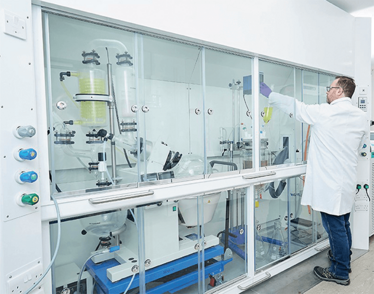
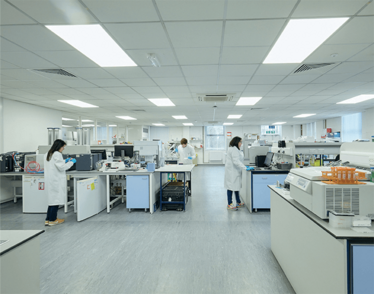
Coping With COVID-19
During the pandemic, we moved to a split shift working pattern. We had people working four days on, four days off. This reduced the numbers that were in the building at any one time. But it meant people had to work longer days and we had to open on the weekends. But it kept everybody safe. Demand for our services went through the roof to the extent that we couldn’t cater to all of it.
As we come out of the pandemic, the biggest challenge today is talent. Especially post-Brexit, we don’t have access to the same pool of labour that we used to have. However, we’re still growing well. In 2021, we served over 60 clients, had record revenues, with over 50 percent of revenue coming from overseas.
The low-hanging fruit has been plucked
It has been said before, but much of the low hanging fruit has been picked in small molecule drug discovery. GPCRs and kinase targets are pretty well trawled. In fact, it’s very rare that we’re asked to discover an antagonist for a GPCR or an ATP competitive inhibitor for a kinase. What we are seeing now are for instance more orphan GPCR targets and protein-protein interactions, which are very difficult areas for small molecule discovery. With many of the projects that come to us, there’s not always much precedent in the literature. Do we look at modalities? Do we look at things like covalency? Do we look beyond simple, competitive inhibition? Are there different modes of binding? Can we uncover new binding sites that are presented through a conformational change in the targets?
I believe that it is important to use a variety of techniques to support discovery efforts. X ray crystallography, computational chemistry, biophysical techniques, and others all have a role to play. And increasingly, I’m finding that the route to success often lies through a combination of technologies and how and when they are deployed. At Domainex, we have a mantra around both fragment- and structure-based drug design: Having the crystal structure and knowing how it interacts with the target at a very early stage of drug discovery is very important. Diversification of modality and mechanism also feeds into the conversation, and it may be possible to use structural information in new ways to make breakthrough compounds.
Despite the disappearance of low-hanging fruit, there is still a lot to go after, particularly with new technologies to help us. One interesting development in the field is AlphaFold. Overall, there have been many advances in terms of computer models that can predict protein structure – but, when it comes to accuracy, it can be a mixed bag! But certainly, these technologies are important. Such technologies help us to unlock more membrane targets – especially those that would have been harder to crystallize. At Domainex, we also have a polymer lipid particle (PoLiPa) technology for membrane targets that uses a “cookie cutter” approach – isolating membrane targets in a way that avoids the use of detergents.
Today’s drug discovery techniques could help us tackle CNS diseases
What are the trends in drug discovery today? Oncology remains a key area, but we’ve also seen interest in anti-infective space on the back of COVID-19. And there are an increasing number of projects in CNS – a notoriously difficult area of drug development. Many big companies had previously exited CNS development so other players, such as biotechs – and even charities – are stepping in to fill the gap. Fortunately, there is a lot of investment and funding available for biotechs right now.
Domainex announced an exciting small molecule drug discovery collaboration with Parkinson’s UK in February 2022 – and this is where we circle back to microglial cells. Given the origins of my career, this project is very close to my heart. There’s much we don’t know about Parkinson’s, but we do know that microglial cells tend to be overly active in the disease. Even during my DPhil, I could see that microglial cells were able to phagocytose neurosecretory nerve endings in the pituitary gland, which was fascinating to observe down an electron microscope.
Specifically, Parkinson’s UK approached us to work on a new project involving a membrane-bound target on microglial cells. The charity already had some chemical starting points and we are now working to optimize these by improving the pharmaceutical properties including potency selectivity, physical-chemical properties, pharmacokinetics and so on. We’re going to run a screening cascade and we aim to deliver a pre-clinical drug candidate that could potentially slow the onset of Parkinson’s disease. One key driver for the program is to discover molecules that can cross the blood-brain barrier to reach the site of action. The program could last up to two and half years and we’ve set technical milestones to reach along the way, so it will be a fascinating journey of discovery with the scientists at Parkinson’s.
It’s a complex project. Parkinson’s has proven to be a hugely challenging disease to fight but we’re going to throw our best intellectual input into the ring. And with all of the developments we’ve seen in small molecule drug discovery, we have more tools than ever before at our disposal to address these challenges.
How a Charity Is Spearheading Drug Development for Parkinson’s Disease
Parkinson’s UK is working to accelerate the discovery and development of new treatments for Parkinson’s disease. Domainex was selected as a CRO partner for a project because of the company’s ability to conduct integrated drug discovery programs tailored to different disease settings; in this case, designing and making compounds to test in neuroinflammation assays and to optimize target engagement in the brain.
We spoke to Arthur Roach, Director of Research at Parkinson’s UK, to understand more about the charity’s role and pioneering work in drug discovery.
How does Parkinson’s UK get involved in drug discovery?
As a charity, our primary mission is to help people with Parkinson’s. We help with their daily lives via our helpline and online information services, we pump-prime nurse posts, and we get people involved in research. We also conduct and fund research at all stages of the process from research grants through to early drug discovery and clinical trials. Charities historically give grants to academic groups, but a lot of the science that comes out of this, although valuable, tends not to lead directly to new treatments. We still offer academic grants, but over the years our supporters have been vocal about wanting a cure sooner rather than later. Five years ago, we started the Parkinson’s Virtual Biotech, our drug development arm. The aim was to channel donations to real drug discovery and fast track the most promising treatments. We’re only a small internal team but we have around 9 projects on the go.
Many big companies have pulled out of the neuroscience area of research creating a real funding gap for these early stage projects. And we hope that by plugging this gap, by providing seed funding and our in-house drug discovery expertise to promising projects, we can get to the stage where big pharma companies become interested in some of the candidates that come out of the Parkinson’s Virtual Biotech. We need to bridge the gap known as the “valley of death” where academics and biotechs lack the resources to get molecules to the clinic.
We’re not aware of any other charities who are acting quite like this, but 5 years in, the pioneering approach we’ve taken is starting to show early signs of success. We believe that we’ll have much needed life changing new treatments for Parkinson’s in years, not decades.
What groups/companies do you work with?
We work with biotechs and universities. Even though we are in the UK, we will work with anyone anywhere in the world who has a good idea for treating Parkinson’s. People can come to us with their proposals and we’ll evaluate them. A key feature of our Virtual Biotech is that the work is done predominantly at CROs rather than within the academic labs, although some specialized studies are still done at universities. Drugs have certainly come out of academic labs, but many academic labs don’t have the deep drug discovery expertise, such as med chem and pharmacokinetics expertise that you need for a successful drug discovery program.
As a charity, we know that our funding alone can only go so far which is why we need to generate a critical mass of high quality data to attract partners such as pharma to keep projects moving through the process. And that’s why we work with CROs who can run projects to pharma industry standards. We also don’t like to put all of our eggs in one basket, so we work with a variety of different CROs on a variety of different projects! Admittedly, our approach makes project management more difficult from a contractual perspective, but we like to select the organizations that best match specific projects.
I’d like to stress that this does not mean that we don’t think academics do valuable work. On the contrary, that’s why the charity continues with its academic grants program to keep a pipeline of discoveries ready to take through the virtual biotech and to explore non-drug based treatments.
What research areas are you pursuing?
Our knowledge of the underlying biology in Parkinson’s has been increasing rapidly and we are seeing increasing interest in some areas in particular, such as the role of damaged mitochondria and lysosomes and also neuroinflammation.
For many years, people have known that inflammation was connected with Parkinson's disease – as it is for many neurodegenerative diseases, including Alzheimer's, Huntington's, and multiple sclerosis. These diseases have a common inflammatory component with low-level chronic inflammation. People initially thought this was just a consequence of the disease process, but, over the last few years, it’s become clearer that this inflammation is probably driving progression of disease. If we can find some way of stopping the inflammation, we can potentially slow down disease progression. And that’s what we’re focusing on with the project with Domainex; we want to come up with compounds that can stop neuroinflammation.
Traditional anti-inflammatory drugs have been trialled in Parkinson’s, but they haven’t delivered clear results. There are various theories as to why. We know inflammation in the brain is different to outside of the brain, and involves microglia, the resident macrophages of the brain. Microglia were dismissed for many years as providing some sort of scaffolding function, but now they are regarded as important cells for protecting neurons in the brain from infection and toxic cellular debris. In Parkinson’s, these microglia become over activated and start releasing toxic substances, damaging and ultimately killing neurons in a certain part of the brain.
We are now looking for compounds that modulate a particular target in these microglial cells. We looked at a number of CROs and went through a rigorous review, eventually deciding on Domainex.
Because of the ongoing pandemic in 2021, we couldn’t meet them face to face – but they came across really well in video calls! When we finally met them at their site in Cambridge, it was a very decisive meeting – and the project started in the middle of January 2022.
Why is the prevalence of Parkinson’s increasing?
Parkinson’s is the fastest growing neurological condition in the world and whilst we don’t know definitively why this is, there are various theories. The main factor is likely the general ageing of the population. Parkinson’s can affect younger people but most of the people who are diagnosed are over 50 years of age and the average age of diagnosis is about 60. Age is definitely a significant factor and there are some genetic risks too but this is less common.
There could also be a connection with the environment; perhaps certain chemicals are leading to an increased prevalence of the disease, but there’s no conclusive evidence. Some studies suggest there is a higher proportion of Parkinson’s in rural areas. There could be a link with pesticides, but right now we don’t know if this is the case and the evidence is lacking.
What we do know is that the incidence of Parkinson’s is increasing significantly faster than Alzheimer’s. Alzheimer’s is currently much more common, but the gap is closing.
Tom Mander, Chief Executive Officer of Domainex



















